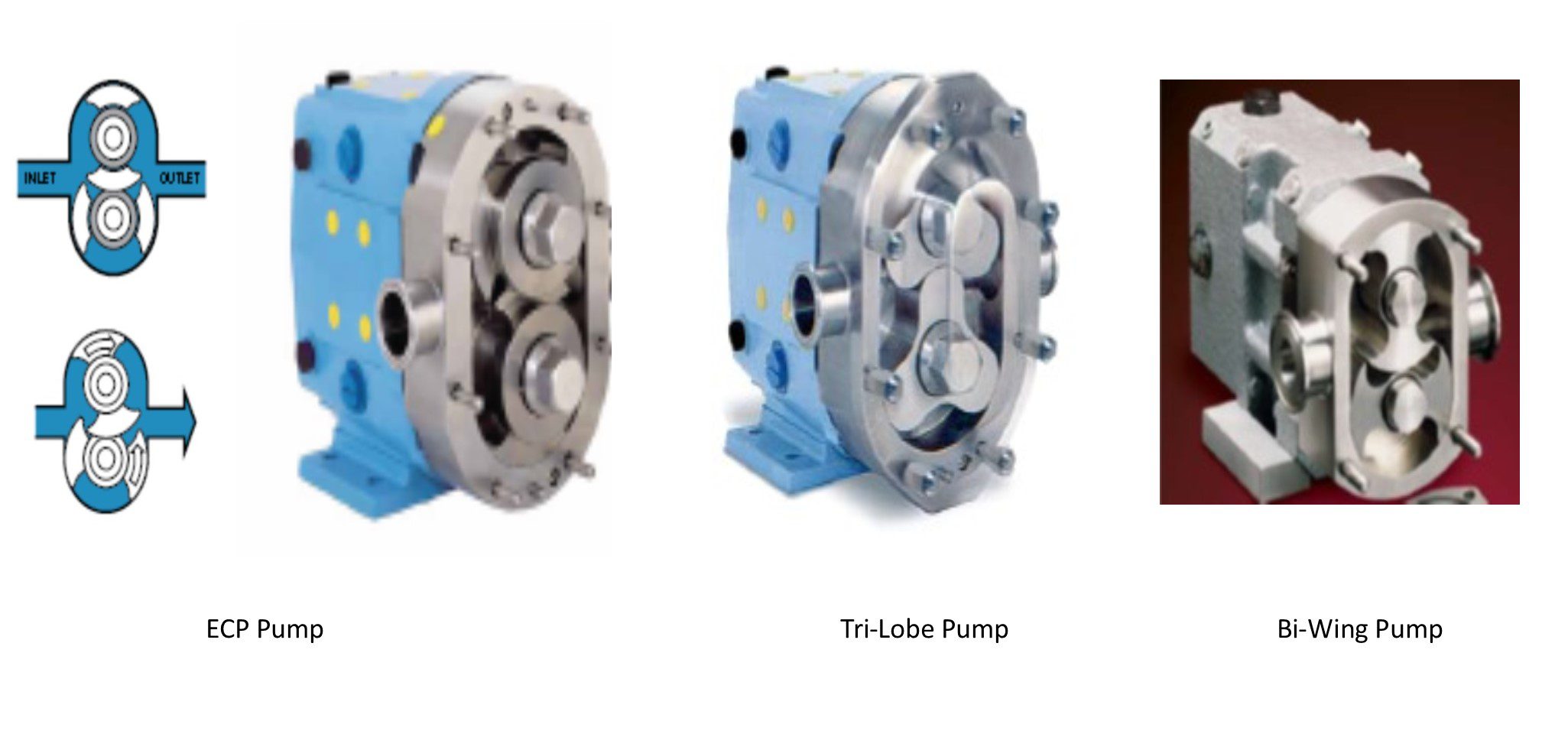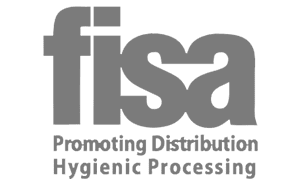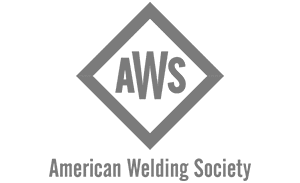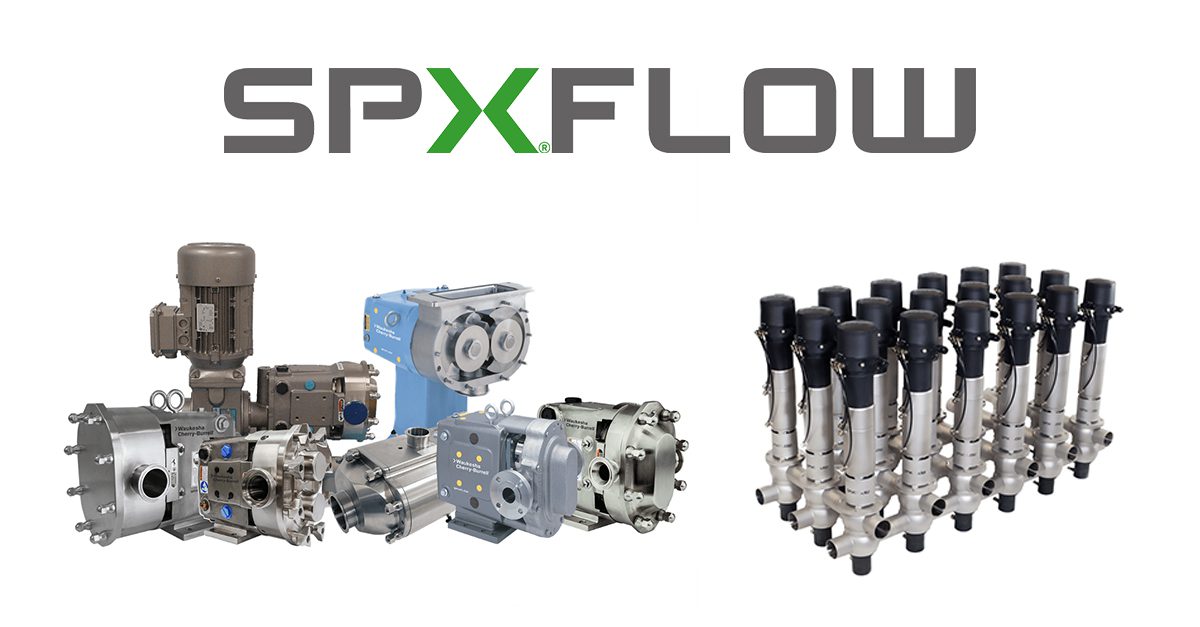Sanitary Rotary PD Pumps: ECP Rotors vs Lobe Rotors. Which is Better?
 So you start shopping around for a sanitary positive rotary pump and the first thing you notice is that different manufacturers have different rotor designs and they all claim theirs is better than the other guy’s. In a nutshell you can find sanitary rotary PD pumps with stainless steel tri-lobe rotors, rubber lobe rotors, external circumferential rotors made from non-galling metal, and something called a bi-wing rotor. So, we are going to address all of these and try to figure whose is right.
So you start shopping around for a sanitary positive rotary pump and the first thing you notice is that different manufacturers have different rotor designs and they all claim theirs is better than the other guy’s. In a nutshell you can find sanitary rotary PD pumps with stainless steel tri-lobe rotors, rubber lobe rotors, external circumferential rotors made from non-galling metal, and something called a bi-wing rotor. So, we are going to address all of these and try to figure whose is right.
The first thing we will do is throw out the pump with rubber lobes, namely the APV R Series pump. We covered this pump on a blog post two weeks ago and there is no sense in rehashing old stuff. It’s a good pump. Read the blog.
That leaves the tri-lobe, the ECP and the bi-wing sanitary pumps. Let’s take a look at each one individually.
Tri-Lobe Sanitary Pump
This design has been around a long time. The lobe sanitary pump has two tri-lobed impellers rotating in opposite directions. The pump creates pumping chambers by sealing the tips of the rotors close to the pump casing as well as at the cross over section in the middle of the pump. Timing is critical in these pumps as the rotors will bump into each other if the timing is off at all. Normally all of the wetted materials inside the pump are stainless steel. The largest manufacturer of stainless steel tri-lobe sanitary PD pumps is Alfa Laval.
External Circumferential Piston (ECP) Sanitary Pumps
The ECP pump features two arc shaped alloy rotors that rotate around fixed hubs in the center of the pump. Because of the shoe type design of the rotors, the ECP sanitary pump has a much longer sealing area moving along the pump casing. In theory, this creates a more tortuous path for fluid to get past the rotor creating less “slip”. The rotors are made of a non-galling alloy which ensures the pump should not be damaged if rotors come in contact with the pump casing. While non-galling alloy is the standard, rotors are available in 316L as well. While two “wings” is standard, these pumps are also offered in single wing versions for applications with large particulates. Waukesha is the main supplier of ECP Pumps.
Bi-Wing Sanitary PD Pump
The bi-wing sanitary pump is kind of a hybrid. It has the longer shoe design of the rotors on the ECP sanitary pumps, but rotors don’t seal against rotor hubs in the middle of the casing. They seal against each other as they cross over similar to the way lobe type pumps seal. They have 316 stainless steel rotors. The main supplier of bi-wing type sanitary pumps is Fristam.
Which One Should I Choose?
It depends, mostly on your application. In our opinion, the ECP pump is probably the best pump for most applications.
- Its rotor design is more efficient. The rotor design creates a very long slip path, resulting in 100% volumetric efficiency for fluids above 100cps. This is not the case in sanitary lobe pumps.
- ECP pumps impart less shear than lobe pumps.
- Sanitary ECP PD pumps handle solids better than lobe pumps as they have a larger pumping chamber that tri-lobes.
- ECP pumps are better for high viscosity material.
- ECP pumps wear better over time. By their very nature, the tight tolerances of a sanitary rotary pump means that they are going to wear. The geometry of the lobe design results in a very small, point contact, between the rotor and the casing. As this point wears, the pump loses efficiency. The longer, shoe type, design of the ECP creates a more tortuous slip path between the rotor and casing, resulting in better efficiencies even as they wear.
- Sanitary ECP pumps create less pulsation than lobe pumps. In lobe pumps the position of the rotors creates constantly changing volumes causing more pulsation.
For most sanitary PD applications the ECP is a better design. Here is what the ECP’s shortcoming are:
- The rotors are generally not stainless steel, they are a different alloy. This can be a problem in pharmaceutical applications.
- Nobody likes to talk about this, but one of the ECP’s greatest strengths can be a weakness sometimes. In a nutshell, sometimes the rotors contact the casing. The non-galling rotors allow ECP pumps to have very tight tolerances and on occasion, especially in high pressure applications, the rotors come in contact with the casing. When this happens you can get some particulate shedding. For most food/beverage applications this really doesn’t matter. But in pharmaceuticals it’s a big deal.
So that is our take on the great sanitary PD rotary pump design argument. Which one is best for you? It depends on your application. Plus there a several other things to be considered in choosing a sanitary PD pump; how are you going to clean it, what are the pressures, what are the temperatures, and seal requirements, just to name a few. If you aren’t sure, contact us and we can help walk you through it. We have over 50 years of experience putting sanitary PD pumps into the right applications. We might even talk to you about the APV R Series rubber rotor pump. In the right application, it’s a champ.
Holland Applied Technologies







